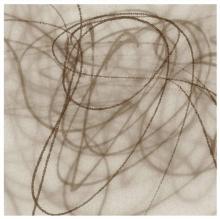Submitted by ARASAllison on
 When I arrived in New York a few days before the 2012 Art and Psyche Conference, it felt wonderful to be immersed in the city, surrounded by so many things to see and experience. I immediately experienced the pull of fascinating things all around me that I felt compelled to photograph. Overhead, towering giants slowly dance, or embrace over the decades and centuries. I am just as fascinated by the exposed steel bones of the city, and by the signs of constant rebuilding and renewal. Mysteries are hidden under our feet in the lowliest of manhole covers, or in the sidewalk grates. I especially love the overhead wires, which have their own music.
When I arrived in New York a few days before the 2012 Art and Psyche Conference, it felt wonderful to be immersed in the city, surrounded by so many things to see and experience. I immediately experienced the pull of fascinating things all around me that I felt compelled to photograph. Overhead, towering giants slowly dance, or embrace over the decades and centuries. I am just as fascinated by the exposed steel bones of the city, and by the signs of constant rebuilding and renewal. Mysteries are hidden under our feet in the lowliest of manhole covers, or in the sidewalk grates. I especially love the overhead wires, which have their own music.
Ever since I started making photographs (around 1998), I have been drawn to abstract images: patterns, textures, lines, simple geometric shapes, and rhythms. As I worked more with abstract photographs and learned more about Jungian psychology, I began to realize that creating abstract photographs is about much more than making a beautiful image. It is about making a connection with something deeper, a hidden intermediate level of reality where matter and spirit meet. That intermediate world is the psychoid in analytical psychology, or the imaginal world as it is called by Henri Corbin in the tradition of Sufism or mystical Islam, which I will be referring to because of its in-depth systematic analysis of imagination, and its understanding of the invisible world that we have largely lost sight of in our materially-oriented Western culture.
Read the full text of Abstract Photography: A Bridge to Imaginal Worlds.
For larger images from the paper, view the accompanying PowerPoint file here.